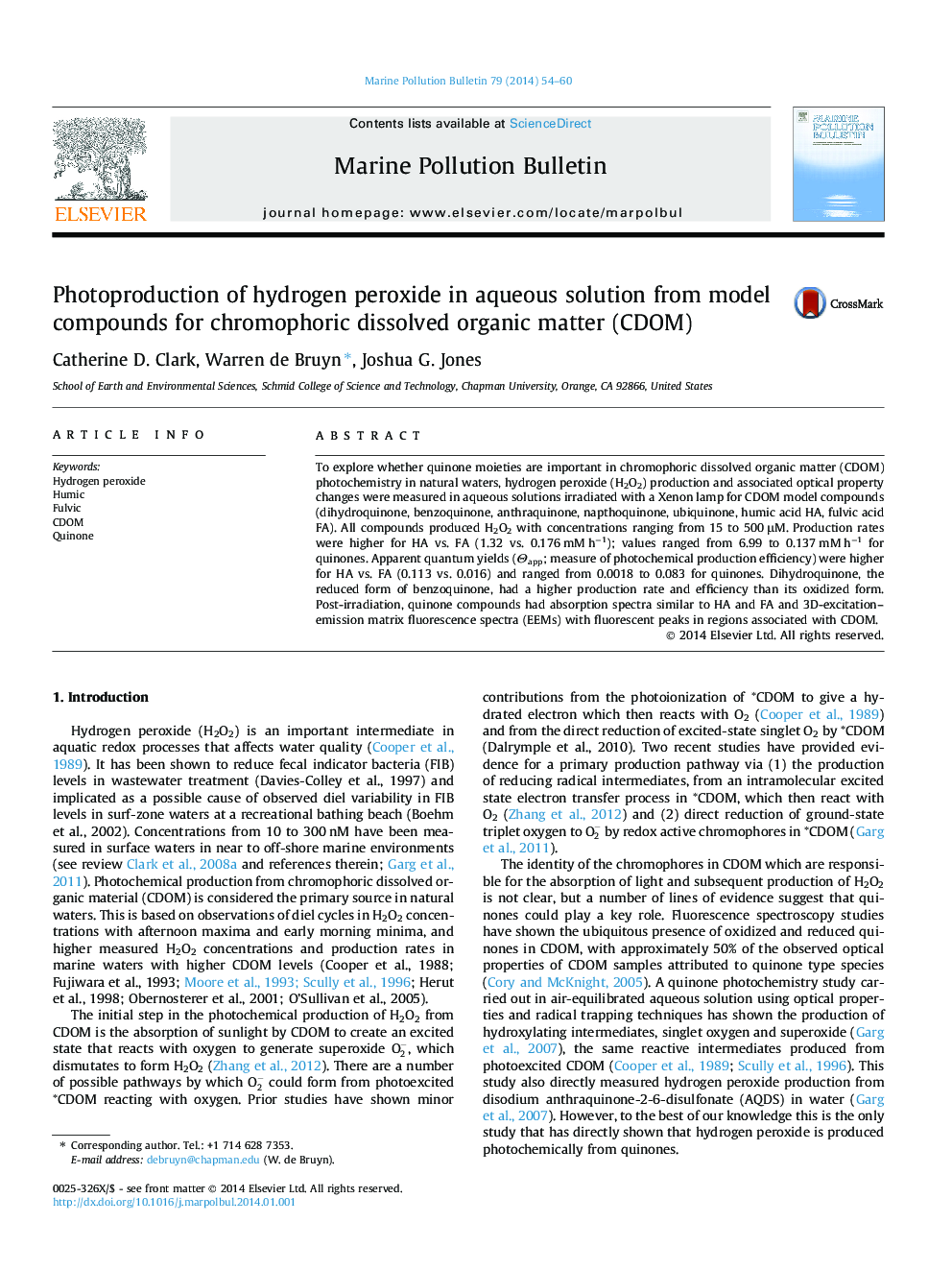| Article ID | Journal | Published Year | Pages | File Type |
|---|---|---|---|---|
| 6358845 | Marine Pollution Bulletin | 2014 | 7 Pages |
Abstract
To explore whether quinone moieties are important in chromophoric dissolved organic matter (CDOM) photochemistry in natural waters, hydrogen peroxide (H2O2) production and associated optical property changes were measured in aqueous solutions irradiated with a Xenon lamp for CDOM model compounds (dihydroquinone, benzoquinone, anthraquinone, napthoquinone, ubiquinone, humic acid HA, fulvic acid FA). All compounds produced H2O2 with concentrations ranging from 15 to 500 μM. Production rates were higher for HA vs. FA (1.32 vs. 0.176 mM hâ1); values ranged from 6.99 to 0.137 mM hâ1 for quinones. Apparent quantum yields (Îapp; measure of photochemical production efficiency) were higher for HA vs. FA (0.113 vs. 0.016) and ranged from 0.0018 to 0.083 for quinones. Dihydroquinone, the reduced form of benzoquinone, had a higher production rate and efficiency than its oxidized form. Post-irradiation, quinone compounds had absorption spectra similar to HA and FA and 3D-excitation-emission matrix fluorescence spectra (EEMs) with fluorescent peaks in regions associated with CDOM.
Related Topics
Physical Sciences and Engineering
Earth and Planetary Sciences
Oceanography
Authors
Catherine D. Clark, Warren de Bruyn, Joshua G. Jones,
